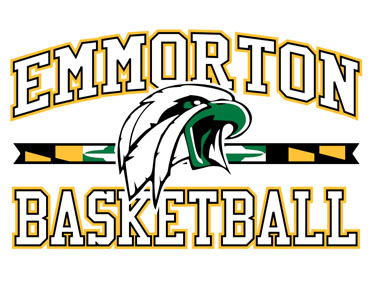Understanding Vector File Formats: Types and Applications
Vector graphics play a crucial role in the world of design, offering versatility and scalability that pixel-based images can't match. To work effectively with vector graphics, it's essential to understand the different vector file formats and their respective applications. In this comprehensive guide, we'll explore the various vector file formats, how they differ, and when to use them to create stunning visuals for both print and digital media.
What Are Vector Graphics?
Vector graphics are composed of paths defined by mathematical equations rather than individual pixels. This means that vector graphics can be scaled to any size without losing image quality, making them ideal for a wide range of applications, from logos on business cards to billboards and beyond.
The key characteristics of vector graphics include:
● Scalability: Vector graphics can be enlarged or reduced in size without any loss of
quality, as they are resolution-independent.
● Precision: Vector graphics are perfect for designs that require precise measurements
and alignment, such as logos and technical illustrations.
● Small File Sizes: Vector files are typically smaller in size compared to their raster counterparts, making them more suitable for web graphics.
Now, let's dive into the various vector file formats and their applications.
1. SVG (Scalable Vector Graphics)
File Extension: .svg
Applications: Web graphics, icons, logos, illustrations, interactive graphics
Scalable Vector Graphics, or SVG, is a widely used vector file format for web design and interactive graphics. SVG files are XML-based, which means they can be easily edited using text editors or design software. They are the go-to format for creating responsive web graphics because they scale seamlessly with different screen sizes and resolutions.
SVG files can include animations and interactivity, making them suitable for creating dynamic web content, such as interactive maps and charts. Additionally, many modern web browsers support SVG natively, ensuring broad compatibility.
2. AI (Adobe Illustrator)
File Extension: .ai
Applications: Illustrations, logos, icons, print materials
Adobe Illustrator is one of the most popular vector graphics software, and its native file format is .ai. AI files are versatile and can contain complex vector artwork, including multiple layers, gradients, and typography. They are commonly used in professional design projects such as logo creation, illustrations, and print materials like brochures and posters.
One advantage of AI files is that they maintain editable vector data, allowing designers to make precise adjustments even after the file is created. However, to view or edit AI files, you need Adobe Illustrator or a compatible vector graphics software.
3. EPS (Encapsulated PostScript)
File Extension: .eps
Applications: Logos, illustrations, print materials, vector-based images for print
EPS is a universal vector file format that's widely supported by various design applications and print devices. It's commonly used for saving vector graphics intended for print, such as logos, illustrations, and vector-based images in publications like magazines and newspapers.
One notable feature of EPS files is their compatibility with both vector and raster images. This means you can include bitmap images within an EPS file, making it a versatile choice for complex designs that combine both types of graphics. EPS files can be opened and edited in software like Adobe Illustrator and CorelDRAW.
4. PDF (Portable Document Format)
File Extension: .pdf
Applications: Documents, presentations, forms, diagrams, print materials
While PDFs are often associated with documents, they also support vector graphics. When vector graphics are embedded within a PDF, they retain their scalability and can be printed at high resolutions. This makes PDF a suitable format for documents containing charts, diagrams, and vector-based illustrations.
PDFs are also commonly used for creating presentations and forms. Additionally, they are widely compatible across various platforms and can be viewed and edited with software like Adobe Acrobat, Adobe Reader, and many others.
5. CDR (CorelDRAW)
File Extension: .cdr
Applications: Illustrations, logos, print materials
CorelDRAW is another popular vector graphics software, and its native file format is .cdr. CDR files are used primarily in the CorelDRAW software environment. They are suitable for creating a wide range of vector-based designs, including illustrations, logos, and print materials.
One advantage of CDR files is their support for advanced vector effects and shaping tools, making them a preferred choice for certain design tasks. However, to work with CDR files, you need CorelDRAW or a compatible software application.
6. DXF (Drawing Exchange Format)
File Extension: .dxf
Applications: CAD drawings, engineering and architectural illustrations, 2D and 3D designs
DXF is a vector file format commonly used in the fields of engineering, architecture, and computer-aided design (CAD). DXF files are versatile and can store 2D and 3D vector data, making them suitable for technical drawings, architectural plans, and mechanical designs.
One notable feature of DXF files is their compatibility with a wide range of CAD software, making them ideal for collaborative projects involving multiple designers or engineers using different software applications.
7. WMF (Windows Metafile)
File Extension: .wmf
Applications: Windows-based illustrations, clipart, office documents
WMF is a vector file format primarily used in Windows-based environments. WMF files are often used for clipart, diagrams, and illustrations in office documents, such as Word and PowerPoint. They can be resized and edited within these applications without loss of quality.
WMF files are relatively lightweight, making them suitable for use in documents and presentations where file size is a concern. However, their use may be limited in non-Windows environments.
8. PLT (HPGL Plot File)
File Extension: .plt
Applications: CNC machine control, plotting, cutting, engraving
PLT is a vector file format used in the context of computer numerical control (CNC) machines, plotters, and devices that perform cutting, engraving, and similar tasks. PLT files contain instructions for these machines to follow, guiding them in producing precise cuts or engravings based on the vector paths specified in the file.
While PLT files are not typically used for graphic design or illustration, they are vital in manufacturing and fabrication industries, where precision cutting and engraving are essential.
9. SVGZ (Compressed SVG)
File Extension: .svgz
Applications: Web graphics, icons, logos, interactive graphics
SVGZ is a compressed version of the SVG file format. It retains all the features and advantages of SVG but reduces file sizes through compression. This makes SVGZ files more suitable for web use, where minimizing load times is crucial.
SVGZ files are compatible with modern web browsers and can be used for a wide range of web graphics, from icons and logos to interactive visualizations. They are an excellent choice when you want to maintain the benefits of SVG but need to optimize web performance.
Choosing the Right Vector File Format
Selecting the appropriate vector file format depends on your specific design needs and intended use. Here are some considerations to help you make the right choice:
Web Graphics: For web design and interactive graphics, SVG is the preferred format due to its scalability and compatibility with modern web browsers. SVGZ is an option for optimizing file size.
Print Materials: For designs intended for print, such as brochures, posters, and logos, AI, EPS, and PDF are common choices. These formats ensure high-quality output in print media.
Technical Drawings: DXF is the format of choice for technical drawings, architectural plans, and CAD designs, especially when compatibility with various CAD software is essential.
Documents and Presentations: PDF is suitable for documents containing vector-based illustrations, charts, and diagrams. It is also a versatile format for presentations and forms.
Windows Environments: WMF is a suitable choice for vector graphics used within Windows-based applications, such as Microsoft Office programs.
Manufacturing and CNC: PLT is indispensable for controlling CNC machines, plotters, and devices used for cutting and engraving in manufacturing and fabrication.
Editing and Collaboration: AI and CDR files retain editable vector data, making them ideal for projects that require ongoing adjustments and collaboration among designers.
Conclusion
Understanding vector file formats is essential
for any designer or anyone working with vector designs. Each format serves specific purposes and offers unique advantages,
so choosing the right one for your project is crucial. Whether you're creating
web graphics, print materials, technical drawings, or CNC instructions,
selecting the appropriate vector file format will help you achieve the best
results and maintain the quality and integrity of your designs. So, explore
these vector formats, experiment with their capabilities, and elevate your
design projects to new heights of precision and scalability.



